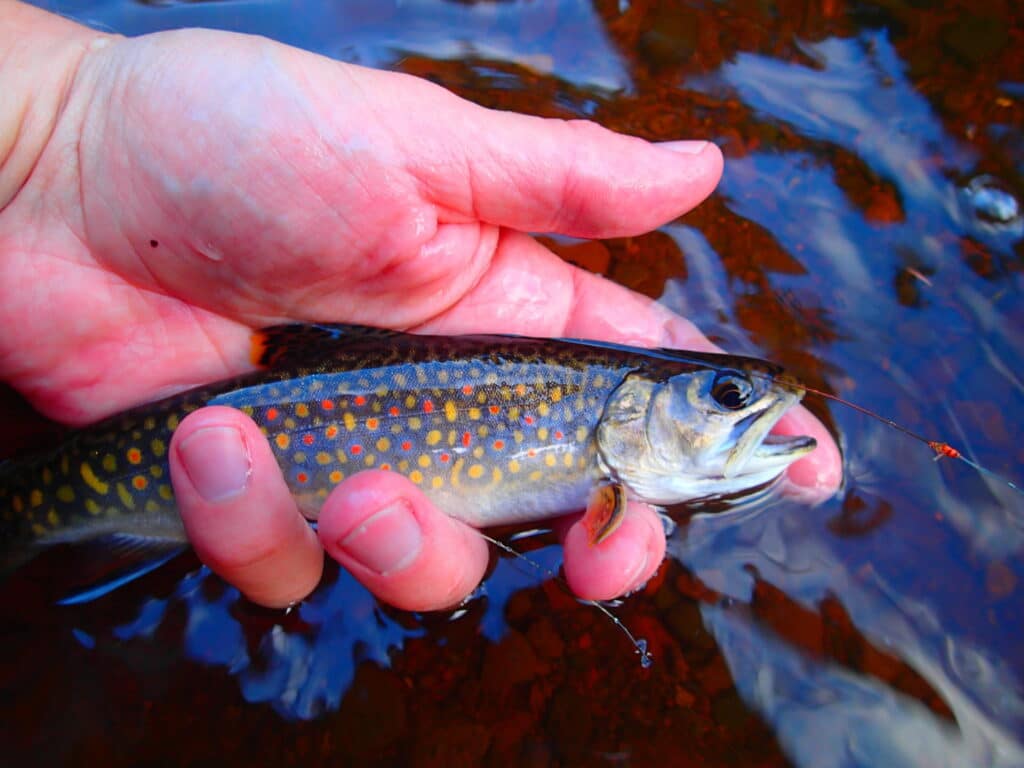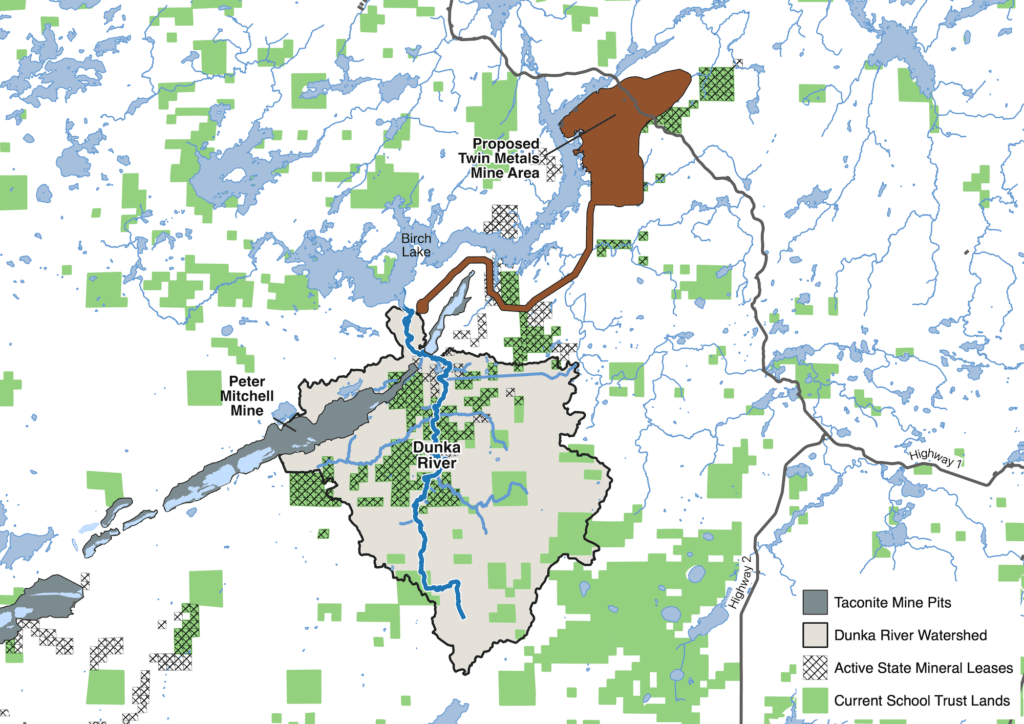A crew of biologists recently documented an apparently healthy population of brook trout in an unexpected river. With numerous fish observed, the 17-mile Dunka River drains 50 square miles of wetlands and taconite mines on the eastern end of the Iron Range before emptying into Birch Lake.
The watershed is also a target for possible future mine development, including extracting metals from sulfide ore. Yet, surrounded by considerable industrial activity, the sensitive coldwater fish have quietly held on for the past several decades.

The Minnesota Pollution Control Agency noted in a report last year that the Dunka River and its sensitive fish could be challenged by potential copper-nickel mining.
The MPCA worked with the Department of Natural Resources and Superior National Forest in September 2019 to reassess the river, using backpack electroshockers to stun fish so they could be counted, and collecting aquatic bugs and other creatures. The crew found numerous brook trout, despite the fact the stream had not been stocked since the 1970s, meaning the fish are naturally reproducing and self sustaining. The largest was nearly 10 inches long, all the fish representing several age classes.

The 17-mile Dunka is not currently a designated trout stream. The findings come as part of a larger project to restore and protect waters in the Rainy Rivers Headwaters region. The MPCA and local partners decided better inventory and understanding of coldwater streams was needed.
The MPCA scores streams on the types of living things found in them. The report says the Dunka River more than ranks as a Northern Coldwater stream, with coldwater fish species comprising the majority of the fish observed. Species found included Sculpin, Longnose Dace, Blacknose Dace — and brook trout, the most famous key coldwater species found in in northern Minnesota. Temperature monitoring also found the water stayed in safe ranges for coldwater species much of the time.
“The Dunka River is a protection-priority stream in the Rainy River Headwaters Watershed,” the MPCA reported. “Communication and outreach regarding its current state, a trout stream with high-quality habitat, and its vulnerability to future land use and hydrological changes will be critical for its protection. Increased forest harvest, new mining activities, and mine closure impacts are a few land use changes that have the potential to change the state of the watershed if not managed with a protection-based focus.”
Much of the Dunka River’s watershed is owned by the state as part of its school trust lands. It is also one of the targeted areas where the state may acquire federal lands in exchange for state lands in the Boundary Waters Canoe Area Wilderness. These lands could be used for new mines, with an incentive to generate education revenue by leasing them for mineral extraction.

The brook trout were found near Birch Lake, less than a mile from water-filled mine pits of the Peter Mitchell Mine, owned by Cleveland Cliffs and operated by Northshore Mining. The PolyMet Northmet project is to its west, draining to the Embarrass and Partridge Rivers. Other mineral deposits have been identified in the Dunka’s watershed.
Not only are current operations affecting the river area, and there are real prospects of additional mining in the future, the plans for the eventual closing of the Peter Mitchell Mine is expected to dramatically affect water flows in the river as the hydrology is modified.
The threats are several, but knowing that the trout are there makes protection possible.
More information:
- The status of Coldwater fish in Dunka River, a protection-priority stream in northern Minnesota – Minnesota Pollution Control Agency (PDF)
- Rainy River – Headwaters – MPCA

